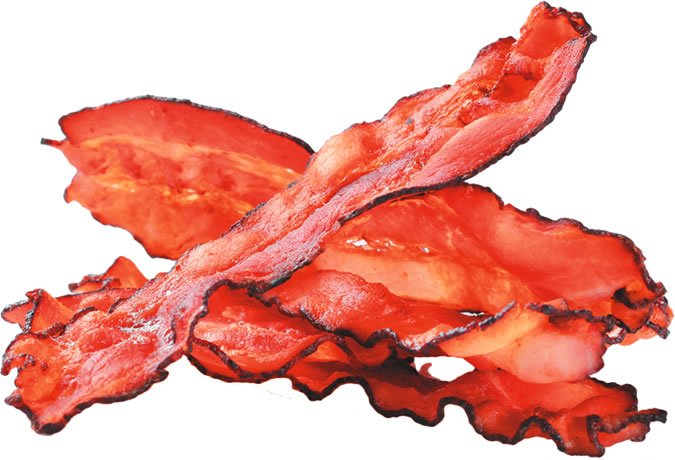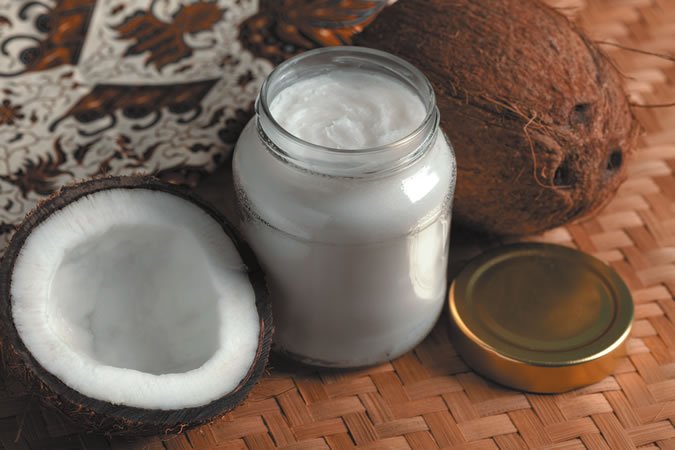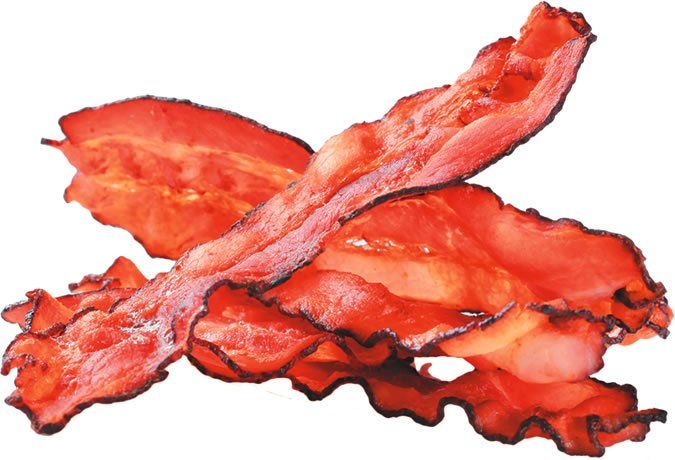Image by Thinkstock

For a nation that not so long ago buried itself in the low-fat craze, America has seen quite a turnaround in its attitudes toward dietary fat-especially saturated fat. Given permission to indulge by the Atkins fad and a recent meta-analysis questioning the link between saturated fat intake and cardiovascular disease (see the June 2014 newsletter), weve loaded up our plates. This summer, wholesale prices of butter and bacon both hit record highs in response to surging consumer demand.
But the recent canonization of saturated fat, as Yale preventive-medicine expert David L. Katz, MD, calls the trend, is as misguided as the anti-fat extreme that led people to load up on low-fat cookies, ice cream and salad dressings. (Data from the national NHANES dietary survey shows that even in the low-fat heyday, people didnt really consume less fat; they just reduced the relative percentage of calories from fat by consuming more total calories, adding carbohydrates like sugar and refined grains.) Saturated fat may not be the only cause of unhealthy cholesterol levels and heart disease, but that doesnt mean its good for you.
We have strong data that substituting polyunsaturated fats for saturated fats decreases heart disease risk, says Alice H. Lichtenstein, DSc, director of Tufts HNRCA Cardiovascular Nutrition Laboratory. We also have strong data that substituting carbohydrates, particularly refined carbohydrates, for saturated fats does not reduce risk. When data from both types of studies are analyzed as one, the waters get muddy. This has unfortunately happened, causing a considerable amount of unnecessary confusion.

COMPLEX COMPOUNDS: Despite that controversial meta-analysis, published in March, the preponderance of scientific evidence continues to connect saturated-fat consumption with heart disease. For example, a 2013 study published in Atherosclerosis found strong evidence to support that plasma saturated fats and trans fats can predict all-cause death and cardiovascular disease more effectively than other fatty acid markers.
Late last year, after an extensive review, the American Heart Association and American College of Cardiology released guidelines on Lifestyle Management to Reduce Cardiovascular Risk (see the February 2014 newsletter) that recommend sharply cutting saturated fat for people concerned about unhealthy LDL cholesterol levels, within the context of an overall healthy dietary pattern. Most Americans average about 11% of calories from saturated fats; the AHA/ACC guidelines call for limiting that to 5% or 6% for individuals diagnosed with elevated LDL cholesterol levels.
But saturated fats are complex-a fact that has opened the door to a wide range of misconceptions and myths, especially in the wake of the butter is back coverage of recent research. Writing in the Huffington Post, Dr. Katz called the question of Is saturated fat truly harmful? one of the illusory nutrition controversies. Because the answers being espoused with ever greater passion and conviction are in response to the wrong question.… The right question is: Is all saturated fat created equal? It is not. Saturated fat is not a compound, but a class of compounds.
Thats true of mono- and polyunsaturated fats (technically, fatty acids), too. Common vegetable oils, as well as animal fats such as butter and lard and the fats in meat and dairy, are actually made up of a mix of different fatty acids. The difference is in the relative amounts of each. Olive oil is mostly oleic acid, for example, while safflower oil is rich in linoleic acid. Coconut oil, which some are now claiming has a wide range of health benefits, is high in lauric acid.
These fats are grouped by their fundamental chemistry into saturated, monounsaturated and polyunsaturated fats. Note that even oils like soybean or canola, considered heart-healthy, contain both kinds of unsaturated fat, omega-3 and omega-6 fatty acids, as well as some saturated fat. The kind of omega-3 fatty acids they contain, however, is different from the type of omega-3 fatty acids contained in fish and fish oil.
MYTHBUSTING: When evaluating health claims for fats and oils, keep this complexity in mind. Besides being high in calories-which are the same in all types of fats-the most important property of different fats is their effect on LDL cholesterol. Those composed of chains of 12-16 carbon atoms-including lauric acid, myristic acid and palmitic acid-have the greatest effect on increasing LDL cholesterol levels. Not surprisingly, these are the fatty acids most prominent in animal products and tropical oils (palm, palm kernel and coconut).
In addition to raising LDL cholesterol, saturated fatty acids also raise levels of the good HDL cholesterol; this is part of the claim that butter is actually good for you. But the amount they raise HDL cholesterol is less than the amount they raise LDL cholesterol. Sometimes we think of this in terms of the total cholesterol/HDL cholesterol (TC/HDL C) ratio or the LDL/HDL cholesterol (LDL C/HDL C) ratio. The lower the ratio-the more HDL cholesterol compared to LDL-the better.
Most other claims about fats that you may find in websites (7 Reasons Why Butter is Good For You), product promotions (50 Ways to Use Coconut Oil to Better Your Life) or even newspaper articles and popular magazines are similarly scientifically dubious. If science is still debating how and how much saturated fat affects heart disease risk-the subject of countless large-scale studies-its unlikely that these far-less-tested notions are worth changing your diet for. Heres a look at some popular notions as yet unproven by the evidence:
Image by Thinkstock

-Claim: Saturated fat changes LDL cholesterol from small, dense and very bad to large LDL, which is benign. Says Tufts Lichtenstein, The data on this are interesting but limited and it is unclear how generalizable the available data are. There have been no intervention studies that show changing LDL particle size decreases heart disease risk. But there have been intervention studies that show substituting saturated fats with polyunsaturated fats decreases rates of cardiovascular disease.
-Claim: Monounsaturated fat is healthier than polyunsaturated because it doesnt oxidize. There is little evidence to support this claim, say Lichtenstein. Most of the data suggests a stronger inverse association between polyunsaturated fatty acids and risk of cardiovascular disease than monounsaturated fatty acids.
-Claim: Short- and medium-chain fats are metabolized differently and lead to improved satiety and increased fat burning. It is an interesting hypothesis, however I have not seen adequate data to support the claim, says Lichtenstein. This claim is often made for the lauric acid in coconut oil. Its true that some small studies using pure medium-chain fatty acids have shown a modest reduction in body weight. But studies actually using coconut oil (which is 44% lauric acid) have not achieved similar results.
-Claim: Coconut oil boosts brain health and prevents dementia. One recent study found that coconut oil helped protect mouse cortical cells in the lab. But its much too soon to jump from this to the conclusion that coconut oil is similarly good for human brains.
You may also read about various fats having antioxidant or anti-inflammatory properties. One study found, for example, that palmitic acid has antioxidant effects. But whatever unproven benefits this might have in fighting free radicals cant outweigh this saturated fats effects on increasing LDL cholesterol. Lichtenstein adds, It is important to remember the studies that provided supplemental antioxidant nutrients did not result in health benefits.
CHEMICAL CHAINS: But what do saturated or unsaturated mean? The difference derives from the way the carbon and hydrogen atoms of these organic molecules are assembled. Each carbon atom has four locations where it can link to other atoms. In the long carbon chains that form fatty acids, two of these spots link to other carbon atoms, leaving two available. If both these available links connect to hydrogen atoms, the fat is saturated-all its possible connections are full. If one but not both possible links are connected to hydrogen (the other being doubly bonded to its carbon-atom neighbor), thats monounsaturated. If there is more than one double carbon-carbon linkage within the molecular chain, it is termed polyunsaturated.
Polyunsaturated fats include several essential fats that your body cant manufacture and must obtain from food. These include omega-3 and omega-6 fatty acids; those labels refer to how many places the last carbon-carbon link is from the end (omega) of the molecular chain.
Trans fats, which have unambiguously been linked to increased LDL cholesterol and risk of heart disease, are polyunsaturated fats, too. But trans fats have one or more carbon-carbon links in a different configuration than the vast majority of such links. Trans fats are contained in partially-hydrogenated fats, which are created when liquid vegetable oil is subjected to hydrogenation to change it from a liquid to solid at room temperature. Trans fats also occur naturally in animal fat.
On the other hand, studies have generally shown that unmodified polyunsaturated fats are the best choice for cardiovascular health-superior even to the mostly monounsaturated fats in olive and canola oils. A 2009 review of the evidence in 11 different studies, for example, concluded: To prevent coronary heart disease, saturated fatty acids should be reduced and replaced with polyunsaturated fatty acids among all middle-aged and older women and men. In the pooled data, switching from saturated fat to polyunsaturated fat for 5% of calories reduced the risk of coronary events by 13% and the risk of coronary deaths by 26%-even after adjusting for other lifestyle factors.
According to the World Health Organization, The most effective replacement for saturated fatty acids in terms of coronary heart disease outcome are polyunsaturated fatty acids, especially linoleic acid. This finding is supported by the results of several large randomized clinical trials, in which replacement of saturated and trans fatty acids by polyunsaturated vegetable oils lowered coronary heart disease risk.
CARBON COUNTING: Besides the level of saturation with hydrogen, the lengths of the carbon-atom chains in different fatty acids differ. The lauric acid (such as that in coconut oil), for example, is a medium-chain saturated fatty acid (12 carbon atoms), which advocates say makes it behave differently in the body than long-chain fats.
Longer-chain saturated fats (14 and 16 carbon atoms), such as myristic acid and palmitic acid, found in palm oils, meats and dairy products, have been clearly linked to cardiovascular disease. As you might guess from its name, palmitic acid makes up a major share of the oil from palm trees (palm oil and palm kernel oil).
The still-longer-chain stearic acid (18 carbon atoms), however, also found in animal fat as well as cocoa butter and shea butter, may be healthier than other saturated fats. Thats because studies have shown that the body can convert some of it into oleic acid-the monounsaturated fat thats the main component of canola and olive oil.
TYPE, NOT TOTAL: This complexity helps explain why nutrition experts are now focusing on the types of fats you should consume, rather than the total amount of fat. Because all fats contain the same amount of calories-nine per gram, or about 120 calories per tablespoon-the key to healthy fat consumption is substitution.
If youre substituting soybean oil or nut butters for butter, thats good, says Lichtenstein. If youre adding soybean oil or nut butters to your diet, you will be adding calories so its likely to be a wash. If you consume more calories, you have to exercise more to avoid gaining weight. There are no magic oils (or nuts) except when replacing saturated fats or carbohydrates.
Healthy fats should have an important place in your diet, and you should give at least as much attention to reducing refined carbohydrates and sugars as to cutting back on saturated fat. Common sense and a diet rich in vegetables, fruits, whole grains, vegetable oils, nuts and seeds, legumes, fish and low-fat dairy products should serve as a basis for a healthy dietary pattern. Thats certainly a better prescription for healthy nutrition than the latest Internet fad.

























Thus, artificial outside palm trees are not only good for residences of any
type but it’s also nicely suited to most business
establishment all around the country. That state’s agriculture
department says outbreaks immediately are infrequent and remoted.
There are numerous capabilities and makes use of for a product like this, however you
do have to pick out the precise product on your needs. You will realize the end result straight away as quickly as you’ll begin with the advance the soonest attainable time.
Once mature, the tree produces as much as six coconuts
at a time. The coconuts are used within the Herblore ability to make additional robust
potions, and given as cost to gardeners to look after planted magic bushes.
Most of which are in the south, the place weather will infrequently reach beneath freezing.
Propagation: Windmill palm seeds will germinate in 8 to 12
weeks with out a variety of fuss. In a protected location,
this windmill palm is taken into account to
be winter hardy to USDA Zone 7. It isn’t reliably winter hardy in the St.
Louis space the place it could not survive harsh winters.